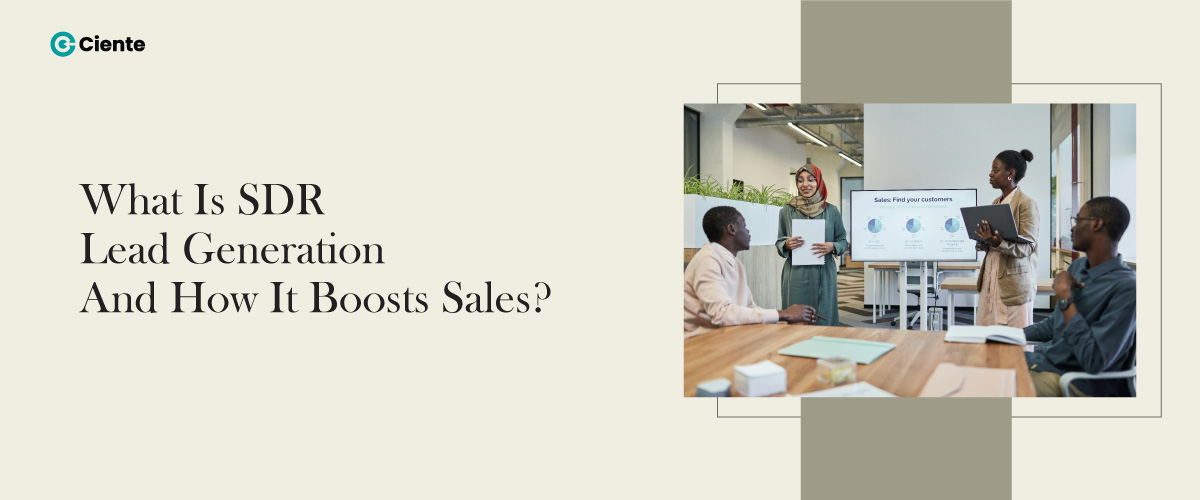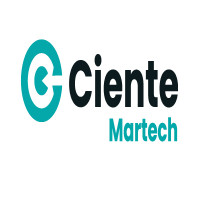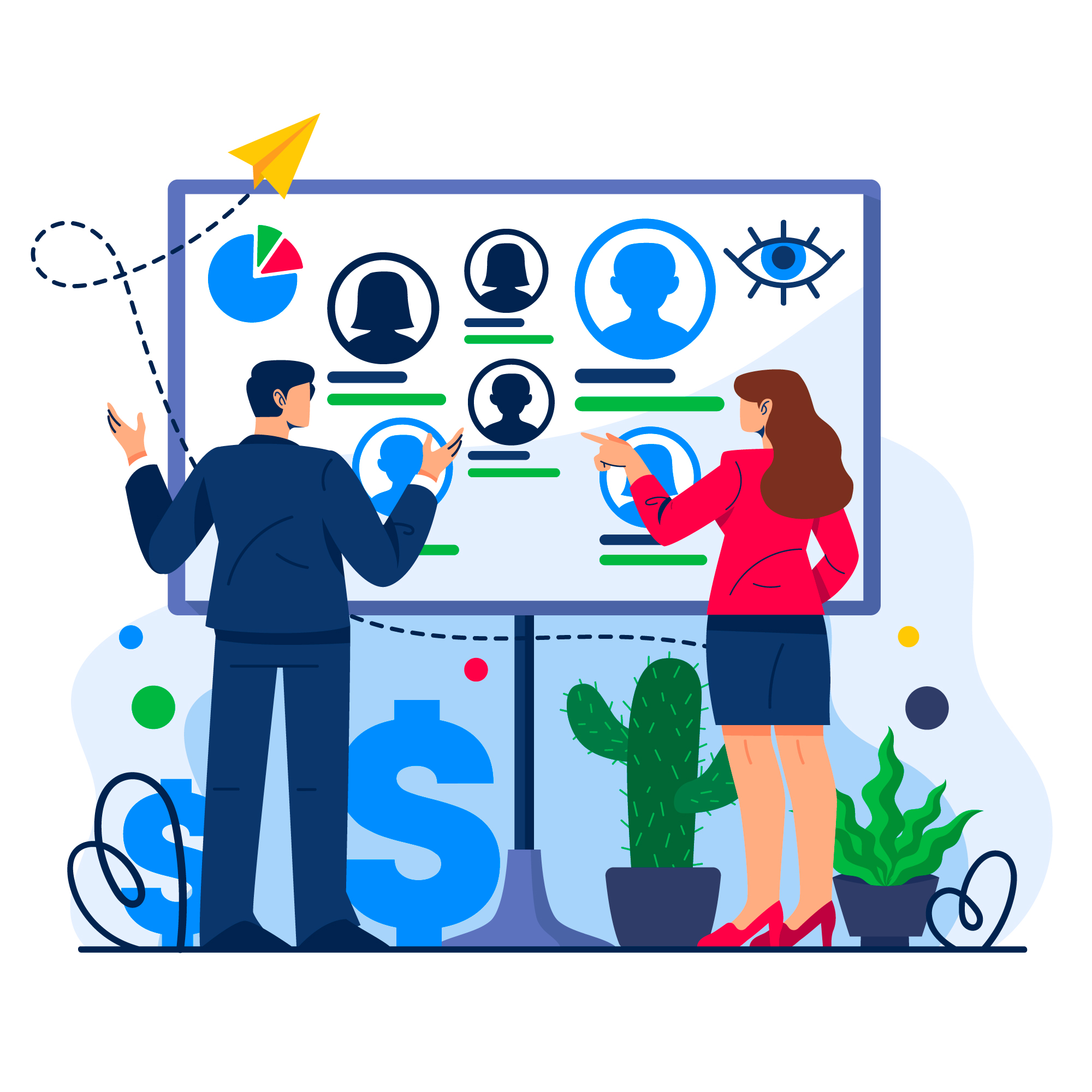SDR Lead Generation: The Key to Scalable Sales Growth in 2025

In today’s competitive B2B landscape, companies must continuously generate high-quality leads to sustain growth. SDR lead generation (Sales Development Representative lead generation) has emerged as a powerful strategy that blends marketing and sales technology to maximize outreach, qualify prospects, and drive revenue.
This blog will explore how SDR lead generation works, why it’s critical for business success, and how sales and marketing leaders can use data-driven strategies to optimize lead conversion rates.
What Is SDR Lead Generation?
SDR lead generation is the process where dedicated Sales Development Representatives identify, engage, and qualify potential customers before passing them to the sales team for closing. Unlike traditional sales, where account executives handle both prospecting and closing, SDRs focus solely on top-of-funnel activities, ensuring a steady flow of high-intent leads.
In modern B2B sales, this approach is critical because decision-makers are inundated with information. SDRs use a mix of outbound tactics (cold calling, email outreach, LinkedIn engagement) and inbound lead nurturing (webinar follow-ups, content-driven outreach) to build relationships and move prospects through the pipeline.
Why SDR Lead Generation Is Essential for Sales Growth
1. Aligns Sales and Marketing for Higher Conversions
SDR lead generation bridges the gap between marketing and sales by ensuring that leads generated through digital marketing efforts (SEO, PPC, content marketing) are properly qualified. Marketing teams attract interest, but SDRs engage and nurture those prospects, increasing the chances of conversion.
By integrating salestech (CRM, automation tools, intent data) with marketing analytics, SDRs can personalize outreach and increase engagement rates.
2. Speeds Up Sales Cycles
B2B buyers conduct extensive research before making a purchasing decision. SDRs accelerate this process by identifying pain points early and providing relevant information at the right time. Instead of waiting for prospects to engage, SDRs proactively reach out, shortening the sales cycle.
3. Ensures Scalability
A structured SDR team allows businesses to scale their lead-generation efforts without overburdening account executives. By segmenting roles, sales teams can focus on high-value activities like closing deals while SDRs handle outreach and qualification.
The Role of Marketing and Salestech in SDR Lead Generation
1. Data-Driven Outreach with Salestech
Sales teams no longer rely on guesswork. Modern salestech solutions like HubSpot, Outreach, and Apollo.io provide real-time data on prospect behavior, helping SDRs tailor their outreach strategies. Key tools include:
• CRM Systems – Track lead interactions and segment audiences.
• Email Automation – Personalize and scale outbound campaigns.
• Conversational AI – Automate lead nurturing and qualification.
2. Marketing’s Influence on Lead Generation
Marketing teams play a crucial role in SDR lead generation by creating demand through:
• SEO & Content Marketing – Educating prospects through blogs, whitepapers, and case studies.
• Paid Advertising – Running LinkedIn and Google Ads to drive inbound leads.
• Webinars & Events – Generating high-intent leads from industry discussions.
When marketing and sales collaborate, SDRs receive better-quality leads, reducing wasted efforts and improving conversion rates.
Calculating Leads and Setting Sales Goals
To measure the success of an SDR lead generation strategy, businesses must establish clear Key Performance Indicators (KPIs). Here’s how to calculate leads and set realistic goals:
1. Define Lead Qualification Criteria
Not all leads are equal. Companies use criteria like BANT (Budget, Authority, Need, and Timeline) or CHAMP (Challenges, Authority, Money, Prioritization) to determine if a prospect is sales-ready.
2. Track Key SDR Metrics
• Number of Outreach Attempts – How many cold calls/emails per day?
• Response Rate – Percentage of prospects engaging with SDRs.
• Lead-to-Opportunity Ratio – How many leads convert into sales meetings?
• Pipeline Contribution – How much revenue is influenced by SDR efforts?
3. Set Goals Using a Formula
A structured lead generation plan involves:
Leads Required=Revenue TargetAverage Deal Size×Win Rate\text{Leads Required} = \frac{\text{Revenue Target}}{\text{Average Deal Size} \times \text{Win Rate}}Leads Required=Average Deal Size×Win RateRevenue Target
For example, if a company has a revenue target of $1M, an average deal size of $50K, and a 20% win rate, they need 100 qualified leads to reach their goal.
Final Thoughts: Future-Proofing Your SDR Lead Generation Strategy
SDR lead generation is more than just cold calling—it’s a strategic approach that combines marketing intelligence with advanced salestech to drive high-quality conversions. By aligning sales and marketing, leveraging automation, and using data-driven insights, companies can maximize ROI and ensure sustainable growth.
As the B2B landscape evolves, businesses that prioritize SDR lead generation will outpace competitors and achieve scalable success. Now is the time for C-suite leaders to invest in modern sales development strategies to build a predictable and high-performing revenue engine.
Note: IndiBlogHub features both user-submitted and editorial content. We do not verify third-party contributions. Read our Disclaimer and Privacy Policyfor details.







